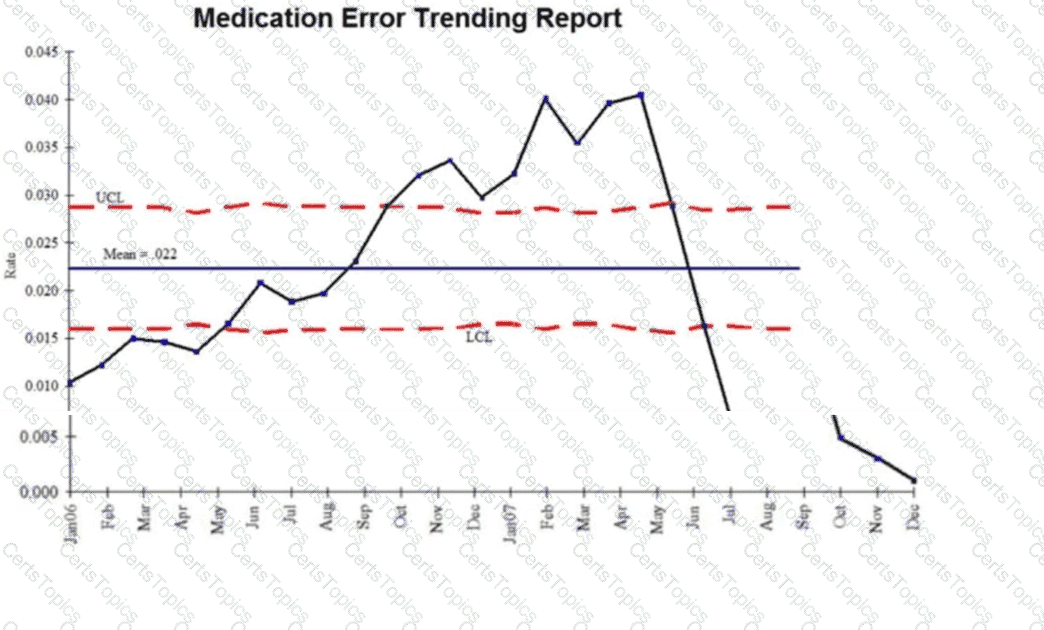Ahospital has been experiencing a significant Increase in the number of medication errors. The hospital's governing board has adopted barcoding technology with electronic documentation at the point of care. Which of the following medication errors will most likely be reduced by the Implementation of this technology?
Care that does not vary in quality because of gender, ethnicity, geographic location, or socioeconomic status is said to be
A Pharmacy and Therapeutics Committee has reviewed the following control chart for presentation to a governing body:
 Which of the following conclusions is most appropriate?
Which of the following conclusions is most appropriate?
An outpatient medical clinic wants to test whether a relationship exists between two factors: lack of available transportation and the number of times patients do not keep appointments. Which of the following tools should be used?